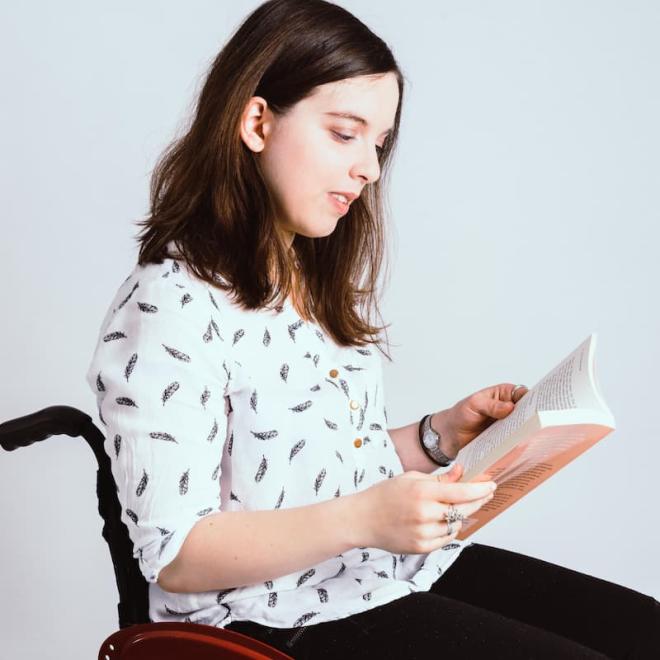
What is Cerebral Palsy?
Did you know that the 6th of October is world cerebral palsy day? This disability is one of the most commonly diagnosed disabilities in children. Worldwide, about 17 million people live with the condition.
And I’m one of them. So, in honour of the day I thought I’d demystify my disability a bit. As well as give you a snapshot of my daily experience with it.
Cerebral palsy is diagnosed when a patient is young, often around 18 months old. It is caused when a baby has a brain haemorrhage during birth. The most common reason for this is a lack of oxygen. For example, my umbilical cord got wrapped around my neck. As it happens, most people with cerebral palsy are also born prematurely.
This initial brain damage most commonly affects a person’s motor function and wider brain development. There are three main ways cerebral palsy presents; stiff muscles, uncontrollable movements and poor balance and coordination. It’s also worth noting that a person can have a mix of types.
I’ve included a bit of information below about he different types of cerebral palsy…
Spastic Cerebral Palsy
This version of the disability presents in stiffness in the muscles. This is the most common version of cerebral palsy, with 80% of people having some form of it. Including me! This version is caused by increased muscle tone, making it harder to move around.
You can have it from the waist down. This is called diplegia/diparesis cerebral palsy and it’s how my disability presents. However, it can also affect just one side of the body. This is called hemiplegia/hemiparesis cerebral palsy and often affects the arm more than the leg (lots of big medical terms!).
Finally, you have quadriplegia/quadriparesis cerebral palsy. This type affects all four limbs, the face and often affects speech patterns.
DYSKINETIC and Ataxic Cerebral Palsy
Dyskinetic cerebral palsy occurs in the legs, arms, hands and feet. It causes problems in moving the affected areas. In these cases, a person’s muscle tone can be either too tight or loose. Too tight and movements can be rapid or jerky. Too loose and they can be slow and undefined.
People with ataxic cerebral palsy will likely have trouble with balance and coordination. This can present as being unsteady when they walk. This is also part of my experience. It can also be difficult for those with ataxic to write as they often have less control over fine motor skills.
My experience
No one person’s experience with this disability is the same. That’s why I like being so open about my diagnosis because I can resonate with other cerebral palsy warriors. I also like challenging non-disabled people’s preconceptions of disability.
I can’t lie, there are some days when it feels like my disability is all I am. My ‘bad days’ as I’ve dubbed them. Where I can’t stand to even get out of bed because of the stiffness and pain. However, on other days something will happen that makes me uncontrollably laugh… like the time I spasmed and face planted into my ice cream!
Advocacy is a big part of who I am. I’m all about having mine and other voices heard. I’ve spoken at conferences and I’ve taken part in local council meetings. Mostly now though I write. A lot. In my opinion, you can never have too many voices speaking out about one thing. I always say, if I reach one person and help in some way, I’ve done my job.
World Cerebral Palsy Day
That’s why I love this day so much. It’s a day where those of us with cerebral palsy can connect and share our stories. It’s also a bedrock for advocacy. People use the day to highlight the need for continued rights progression.
Green is the colour used to represent cerebral palsy. So, crack out a ribbon, a hat or jumper on October 6th and celebrate world cerebral palsy day with us. Our limbs might go out and party without us, but it just means we’ll have another funny story to share.
Read next
Read our blog about your disability rights.
Read our blog about using spoons to help manage your disability.
Read our blog about dealing with 'bad days'.

About the Author
I'm Lauren. I'm a member of Active8 and a professional writer. I hope to use my first-hand experience with disability to empower others and spread awareness. You can follow my work on my website.
The small print made big
The Active8 blog is designed as a platform for our members and the disabled community to share their personal experiences and discussions which they are passionate about. Any views and opinions expressed are those of the writer and do not necessarily reflect the views of our charity.
To the best of our knowledge, the information in blog posts was accurate at the time of publication. Please contact the Active8 manager if you believe any content is incorrect or if you consider any content to be offensive or inappropriate: [email protected]
Where information in blogs has been taken from third party sources, every attempt has been made to give appropriate credit.
From time to time, writers may receive sponsorship, cash payment, free products, services and/or other forms of compensation from companies and organisations that they promote. Active8 will accept no form of payment for blog content or advertising.
Unless otherwise stated, our blogs (and any links they may contain) are not written or reviewed by medical professionals and do not provide health/lifestyle advice. They are not suitable for medical advice, diagnosis, or treatment. Any suggestions these blogs contain are based on the writer’s personal experience. Should you have any concerns about your health (including mental health) then we advise you should speak with your GP or consultant, in the first instance, or call 999 in an emergency.







